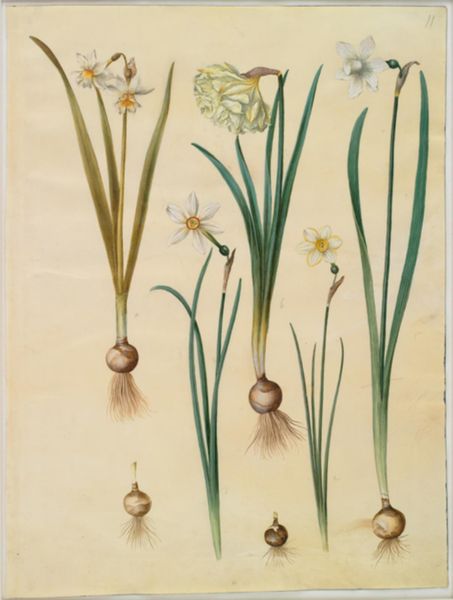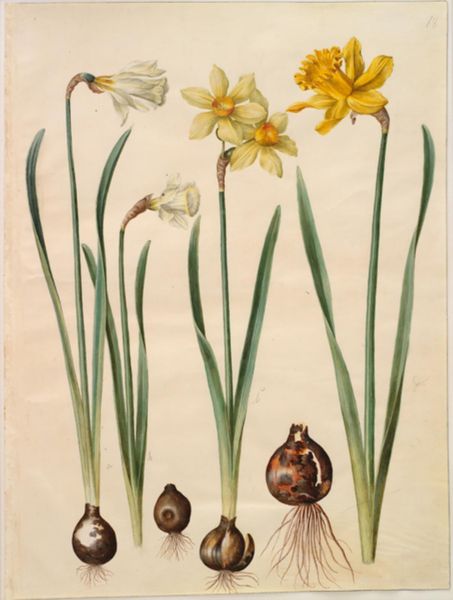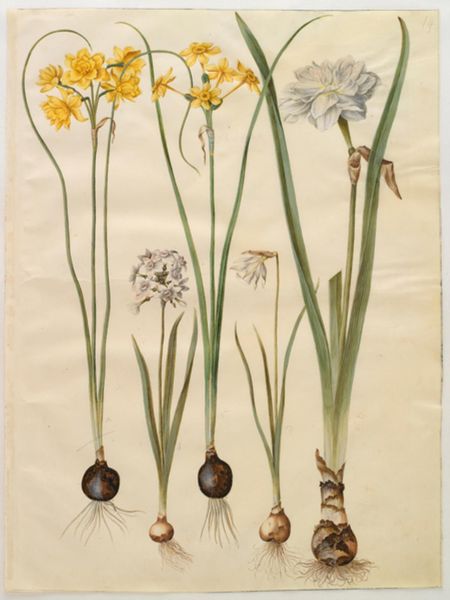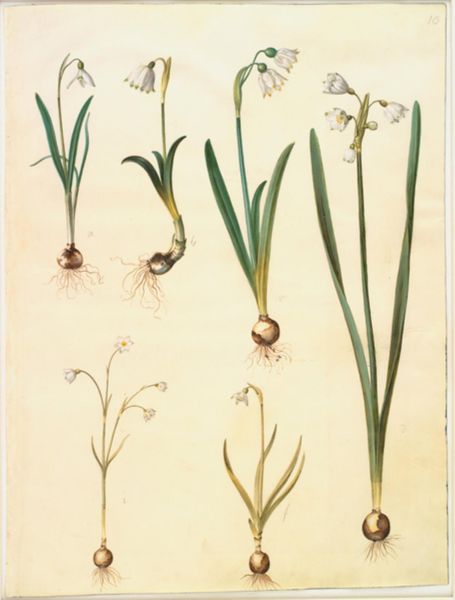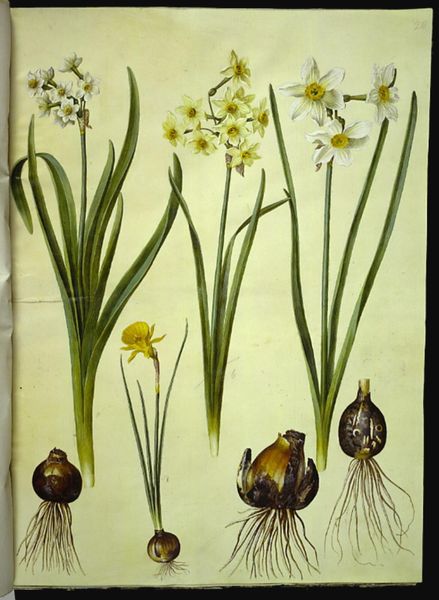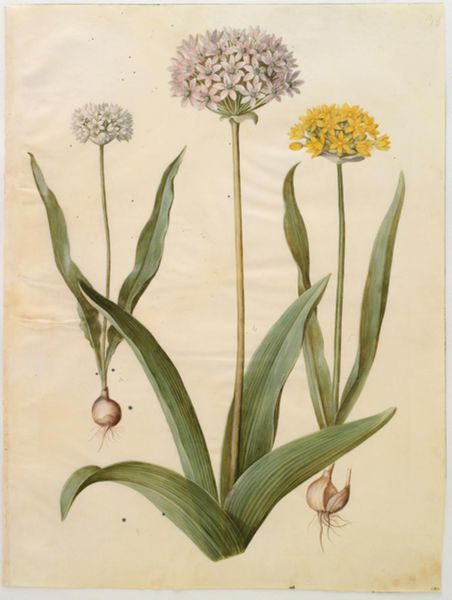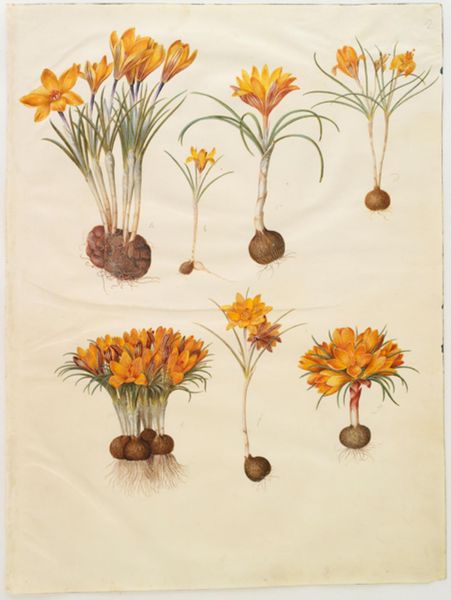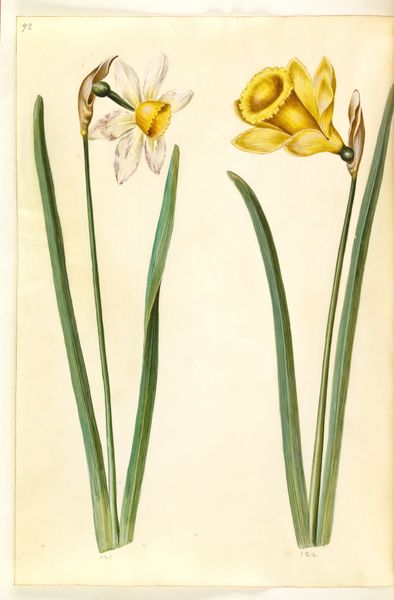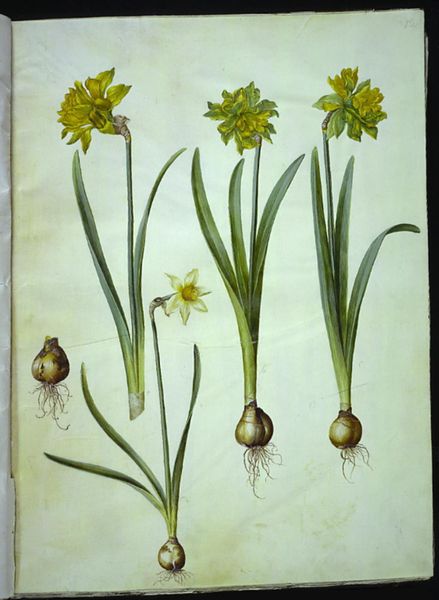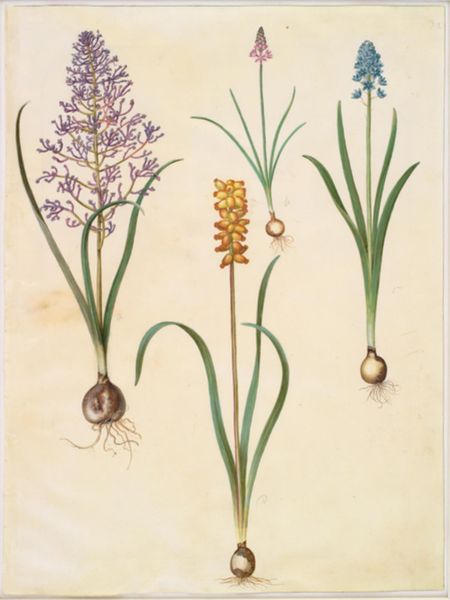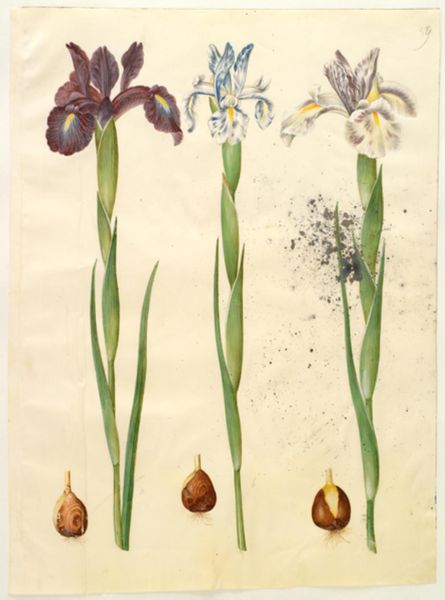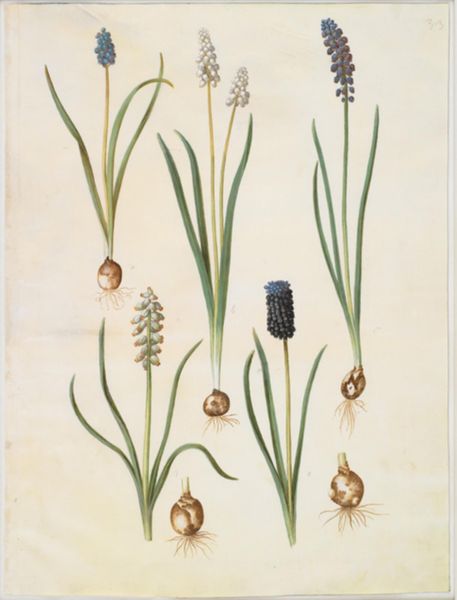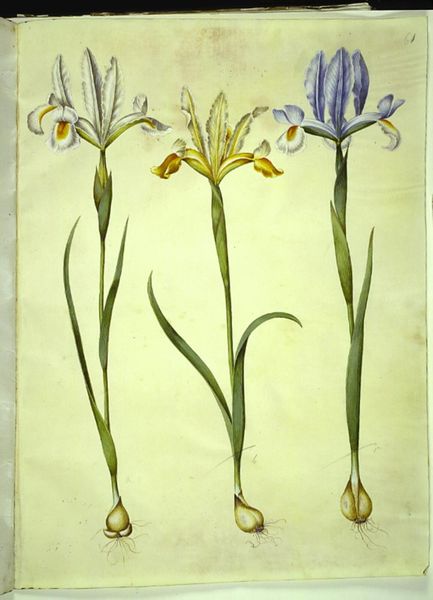
Narcissus pseudonarcissus minor; Narcissus pseudonarcissus (påskelilje); Narcissus ×tenuior; Narcissus bulbocodium (krinoline-narcis); Narcissus pseudonarcissus bicolor (tofarvet påskelilje) 1649 - 1659
0:00
0:00
drawing, gouache, watercolor
#
drawing
#
gouache
#
watercolor
#
watercolour illustration
#
academic-art
#
botanical art
#
watercolor
Dimensions: 505 mm (height) x 385 mm (width) (bladmaal)
Hans Simon Holtzbecker rendered these Narcissus varieties with watercolor and gouache. The narcissus, named after the Greek youth of tragic self-adoration, carries a complex symbolism. In Holtzbecker’s arrangement, we see not a single, idealized bloom, but a chorus of forms. This echoes the flower’s own mythology. Consider the tale of Persephone, lured by a narcissus into the underworld – a potent symbol of temptation and vanity. Yet, paradoxically, these flowers also herald the spring, rebirth, and new beginnings. This duality is not unique. We see echoes in the vanitas paintings, where flowers signify both beauty and the ephemeral nature of life. Holtzbecker presents more than botanical specimens, he invokes a dialogue between beauty and mortality, resonating deep within our collective memory. These images capture the emotional and psychological weight of nature’s cycles.
Comments
No comments
Be the first to comment and join the conversation on the ultimate creative platform.
